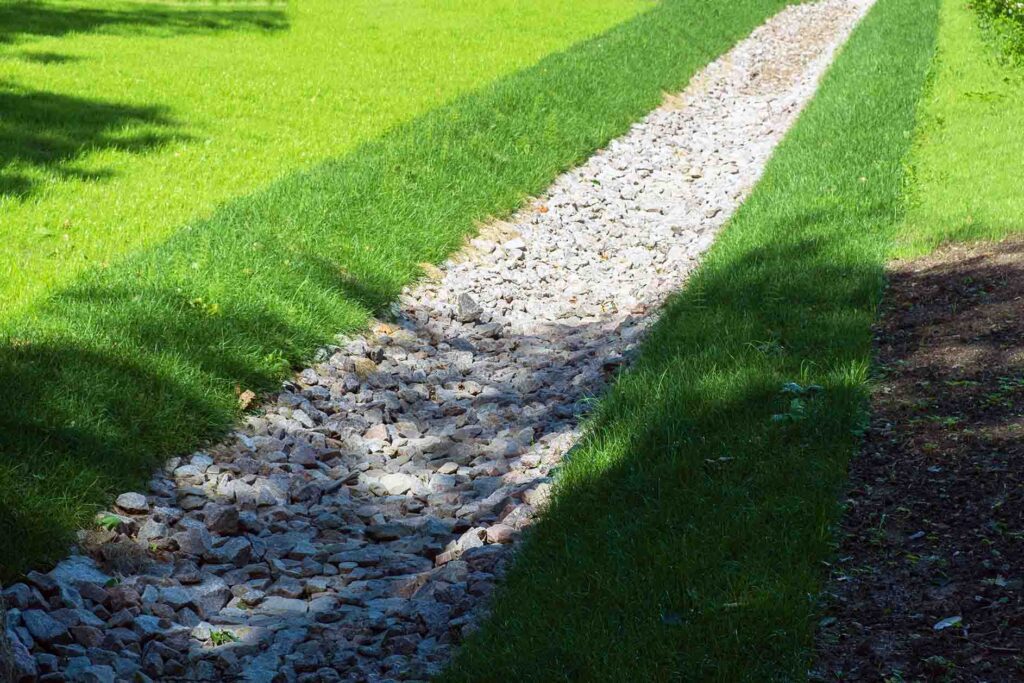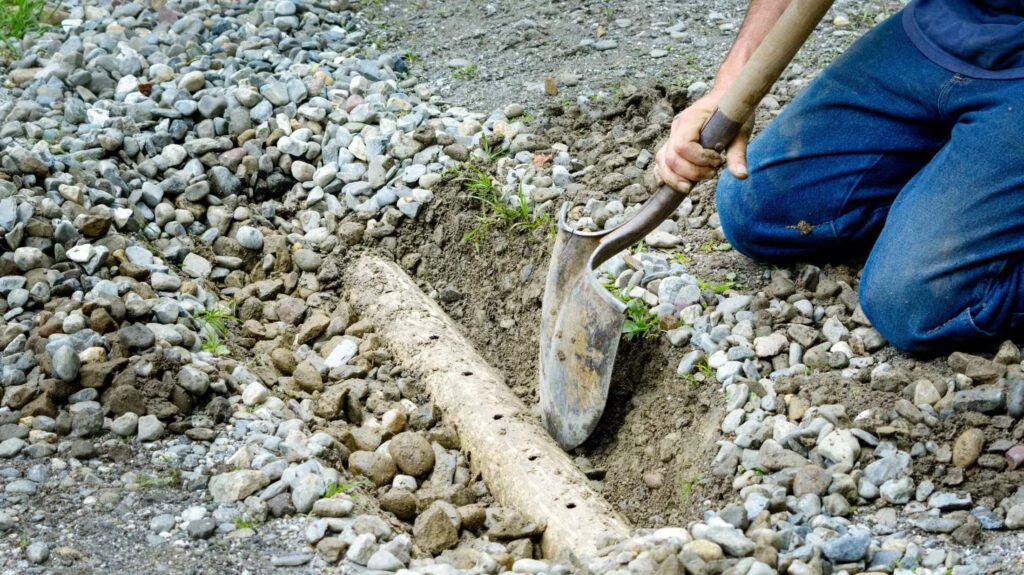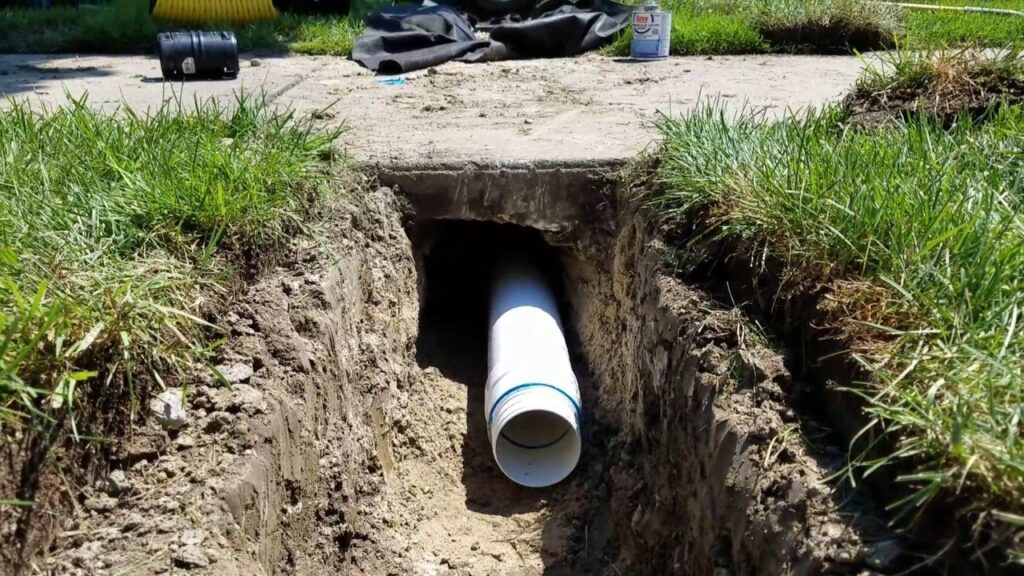How Does a French Drain Work in a Basement?
Basement flooding is a common problem, especially in areas with heavy rainfall or poor drainage systems.
Installing a French drain is one of the most effective ways to prevent this issue.
In this guide, we’ll explain how a French drain works in a basement, its benefits, and how to install and maintain it to keep your home dry. Regular Kendall French drain maintenance is essential to ensure your system continues to function efficiently and protects your home from water damage.
How does a French drain work in a basement?
A French drain in a basement works by collecting water that seeps into the space, channeling it through a perforated pipe to a sump pump, which directs the water outside to prevent flooding.
Key Takeaways
- French drains help redirect water away from your basement, preventing flooding and water damage.
- They are particularly useful for homes with existing water issues or basements that frequently get wet.
- Regular maintenance is necessary to ensure the system functions efficiently.
What is a French Drain?

A French drain is a simple yet effective drainage solution that works by collecting water and redirecting it to a safe discharge area.
Typically, the system consists of a trench filled with gravel or rock, with a perforated pipe running through it.
The pipe is designed to capture water from the surrounding soil and allow it to flow through the drain, away from the property. When planning this type of drainage system, many homeowners ask: what pipe to use for French drain? The most commonly used options are perforated PVC or corrugated plastic pipes, as both allow water to enter through small holes and efficiently carry it away from the area.
When installed in a basement, the French drain helps direct water that accumulates near the foundation and prevents it from entering the basement.
It works by using gravity to carry the water through the trench and pipe system, where it can be discharged away from the home.
Why Install a French Drain in a Basement?
If you’re wondering why you might need a French drain in your basement, consider the following reasons:
1. Preventing Water Damage
Water that seeps into your basement can cause significant damage to the walls, floors, and foundation of your home.
Over time, this can lead to the growth of mould and mildew, which can be harmful to your health.
A French drain helps divert water away from the foundation, reducing the chances of water damage.
2. Dealing with Excessive Moisture
If your basement is damp or prone to moisture buildup, a French drain can be a great way to manage water accumulation.
Even if your basement isn’t experiencing full-on flooding, a French drain can help alleviate the moisture that can eventually lead to larger issues.
3. Enhancing Home Value
Installing a French drain in your basement is an investment in your home.
It helps protect your property’s foundation and structural integrity, and it may increase the overall value of your home by preventing future water damage and improving its overall condition.
How Does a French Drain Work in a Basement?
Now that we understand the importance of a French drain, let’s look at how it works when installed in your basement.
1. Water Collection
The process begins with water naturally collecting near the foundation of your home. This can occur due to rainfall, melting snow, or high water tables.
The water is often absorbed by the soil surrounding your foundation, which can eventually lead to moisture buildup inside the basement.
A French drain is designed to capture this water before it can enter the basement.
2. Trench and Perforated Pipe
To install the French drain, a trench is dug along the perimeter of the basement or the areas where water is most likely to accumulate.
In this trench, a perforated pipe is laid down. The pipe has small holes along its length, allowing water to seep into it.
The trench is then filled with gravel or other coarse materials, which help direct water towards the pipe.
3. Gravity-Assisted Water Flow
Once water enters the perforated pipe, gravity takes over. The pipe is sloped slightly, allowing water to flow downwards into the drainage system.
The slope ensures that water moves towards the outlet, away from the foundation. Depending on the setup, the water can be discharged into a sump pump, storm drain, or dry well.
4. Safe Water Discharge
The final step in the process is directing the water to a safe area, away from your home. This is where the water exits the pipe system, ensuring that it doesn’t flow back toward the basement.
Proper placement of the French drain outlet is critical to ensure that water doesn’t accumulate near your foundation again.
When to Install a French Drain in a Basement?

Deciding when to install a French drain in your basement depends on a few factors. Here are some situations in which it would be beneficial to have one installed:
1. Signs of Water Damage or Moisture
If you notice water stains on the walls, damp carpets, or signs of mould and mildew in your basement, it’s time to consider installing a French drain.
These are clear indicators that water is seeping into the basement, and a French drain can help prevent further damage.
2. Soggy Basements After Heavy Rain
If your basement regularly gets wet during heavy rain or storms, a French drain can help reduce the impact.
Even if you don’t have significant flooding, a French drain will manage the water runoff and keep your basement dry.
3. In Areas with High Water Tables
In some areas, the water table may be high, meaning that groundwater naturally rises closer to the surface.
This can cause excess moisture to build up in your basement. A French drain will help redirect this groundwater, preventing it from entering your basement.
Installing a French Drain in a Basement
French drains can be installed as a DIY project, but they do require specific knowledge and tools. Here’s an overview of the steps involved in installing a French drain cleaning in Fort Lauderdale, especially if you’re dealing with persistent moisture issues or water intrusion.
1. Plan the Drainage Route
Before digging, it’s important to determine where the water is collecting and how to direct it away from the foundation.
You’ll need to plan a route for the trench and make sure it slopes properly for efficient water flow.
2. Dig the Trench
The trench needs to be deep enough to accommodate the pipe, gravel, and any other materials used. Understanding how deep for French drain installation is crucial—most trenches should be dug between 18 and 24 inches deep to ensure proper gravity-driven drainage and prevent standing water.
It’s also essential that the trench is wide enough for the pipe to be laid properly and surrounded by gravel.
3. Lay the Perforated Pipe
Once the trench is ready, lay down the perforated pipe. Make sure the holes face downwards and that the pipe slopes away from the foundation.
This ensures that water flows efficiently through the system.
4. Add Gravel or Rock
Cover the pipe with gravel or rock to help filter the water and prevent debris from entering the pipe. Gravel also ensures that water flows freely through the system.
5. Fill the Trench and Restore the Area
Once the pipe is covered, fill the trench with soil to restore the area. Depending on your preference, you may choose to add sod or plants to the area to help blend it into your landscaping.
Maintenance of a French Drain in a Basement

To ensure your French drain continues to function properly, regular maintenance is essential. Here are some key maintenance tasks:
1. Clean the Grate or Outlet
Make sure the grate or outlet covering the drain is free of leaves and debris. Keeping the outlet clear ensures that water can enter and exit the system without obstruction.
2. Check for Clogs
Over time, debris can build up in the pipe, reducing its efficiency. It’s important to check the system regularly for signs of clogging and remove any blockages before they become a bigger issue.
3. Inspect the System After Heavy Rain
After a heavy rainfall, inspect your French drain to ensure it’s working effectively. If you notice any issues, such as water pooling near the drain or inside the basement, it may indicate a problem with the system that needs attention.
Frequently Asked Questions
1. Can a French drain be installed in a finished basement?
Yes, a French drain can be installed in a finished basement. However, it will require digging and possibly disrupting the existing flooring, so it’s best to consult a professional for such a project.
2. How long does a French drain last?
A French drain can last for decades if properly installed and maintained. However, regular cleaning and maintenance are essential to ensure its longevity.
3. How much does it cost to install a French drain in a basement?
The cost of installing a French drain in a basement varies, but it generally ranges from $2,000 to $6,000, depending on the size of the system and the complexity of installation. While not directly related, understanding sizing systems is important in various home improvement projects—for example, a grease trap size calculation guide is essential for ensuring proper kitchen drainage in commercial or residential setups, just as proper drainage is key for basement waterproofing.
Conclusion
A French drain is an effective solution for preventing water from entering your basement and causing damage.
By redirecting water away from your home’s foundation, it helps protect your property from moisture, flooding, and mould growth.
Regular maintenance and proper installation are key to ensuring that your French drain works efficiently.
If you are dealing with water issues in your basement, installing a French drain may be the ideal long-term solution.
